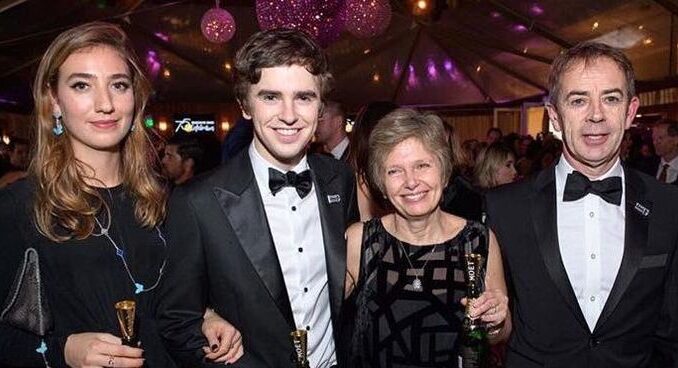
In an age where television medical dramas often focus more on romance than realism, The Good Doctor stands apart as a refreshing return to authenticity. While it’s no secret that the show is beloved for its emotional depth and groundbreaking representation of autism through Dr. Shaun Murphy, what’s often overlooked is just how carefully crafted its medical world truly is.
From high-stakes surgeries to ethical dilemmas that mirror real hospital life, The Good Doctor doesn’t just entertain — it educates. And in doing so, it has redefined what it means to be a “medical drama.”
Behind the scenes, the show employs a team of medical advisors — including real surgeons and consultants — who work closely with the writers and directors to ensure that what you see on screen could realistically happen in an operating room. Every tool, every monitor beep, every suture has a purpose. Even the choreography of surgeries, from the way a scalpel is held to how a tumor is removed, reflects a commitment to medical accuracy.

But The Good Doctor isn’t just about surgical precision. What makes it compelling is the way it uses medicine to explore deep human questions. Should a parent be allowed to deny life-saving treatment for their child based on personal beliefs? Should a doctor risk their career to advocate for an undocumented patient? Can a surgeon with autism be trusted with complex social decisions in critical moments? These aren’t hypothetical issues — they’re pulled straight from the real world. And the show dares to confront them head-on. What’s refreshing is that it doesn’t spoon-feed viewers an answer. Instead, it creates space for moral tension, where doctors argue, patients push back, and outcomes are uncertain.
Unlike other medical shows that often resolve crises neatly by the end of an episode, The Good Doctor understands that in real medicine, there isn’t always a happy ending — or even a clear right or wrong. That emotional honesty gives the show its weight. Every operating room scene in The Good Doctor is a reminder of what’s truly at stake: human lives. The camera often zooms in on Shaun’s thought process, showing flashbacks, calculations, and anatomical diagrams in his mind. It’s a clever narrative device, but also a tool that shows just how much thinking — and pressure — goes into every incision a doctor makes.
For Dr. Murphy, that pressure is magnified. His autism gives him a gift for spotting patterns and envisioning solutions others might miss, but it also brings emotional hurdles. One moment, he’s delivering a diagnosis that will save a life; the next, he’s frozen by the sound of a crying patient or overwhelmed by the chaos of a trauma bay. These moments aren’t just plot points — they’re an exploration of the mental and emotional toll that medicine takes on all doctors, not just Shaun.
By letting viewers feel that pressure, the show offers a rare look into the internal lives of surgeons — something few dramas truly explore. Another strength of The Good Doctor is how it highlights the hospital as a living, breathing organism — one full of hierarchies, politics, bureaucracy, and personalities that clash as often as they collaborate.
From the rigid expectations of Dr. Andrews, to the emotional empathy of Dr. Lim, to the ambition of Dr. Morgan Reznick, every character brings a unique perspective on what it means to heal. And like in real hospitals, decisions are often the product of compromise between medical necessity, patient wishes, legal liability, and institutional policy.
Beyond individual surgeries and story arcs, The Good Doctor regularly takes on broader issues in healthcare — such as insurance disparities, racism in medicine, gender bias, and the mental health of medical professionals. Whether it’s a young trans patient seeking affirmation through surgery, or a Black doctor calling out institutional inequity, the show isn’t afraid to mirror real headlines and ask, “How do we fix this?” And perhaps most powerfully, it allows patients to be more than problems to be solved. They’re human beings with fears, faith, and flaws. The medicine may drive the story, but the people give it heart.
The Good Doctor may not be perfect, but it’s one of the few shows on television that truly respects the practice of medicine — not just as a science, but as a calling. It reminds us that behind every diagnosis is a doctor under pressure, a patient holding hope, and a choice that could change a life. By marrying realism with humanity, it’s no wonder the show has struck a chord with both general audiences and those inside the medical field. It’s not just about saving lives on screen — it’s about honoring those who do it in real life.
